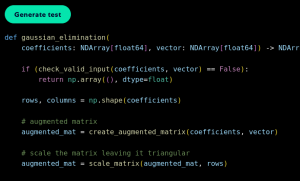SAP’s HANA, EMC’s Project Lightning: Two Poles in Multi-Architecture Future
![]() Far from being a threat to EMC’s storage business, SAP’s HANA In-Memory Appliance is good for storage, says EMC VP and General Manager of the EMC Advanced Technology Group Don D’Errico in an interview on SiliconAngle.tv live from SAPphire 2011. And while to an extent the proto-architecture it represents competes with the direction of EMC’s Project Lightning vision, they will probably co-exist in a future that will see at least two and possibly more multi-tiered architectures evolve to meet different needs, he told Wikibon Co-Founder and .Chief Analyst David Vellante and SiliconAngle Founder John Furrier.
Far from being a threat to EMC’s storage business, SAP’s HANA In-Memory Appliance is good for storage, says EMC VP and General Manager of the EMC Advanced Technology Group Don D’Errico in an interview on SiliconAngle.tv live from SAPphire 2011. And while to an extent the proto-architecture it represents competes with the direction of EMC’s Project Lightning vision, they will probably co-exist in a future that will see at least two and possibly more multi-tiered architectures evolve to meet different needs, he told Wikibon Co-Founder and .Chief Analyst David Vellante and SiliconAngle Founder John Furrier.
Both approaches are trying to accomplish the same thing – to move critical data closer to the compute resource to speed up data access, to create what is being called “fast data”. And each will find applications where it is most appropriate. HANA moves the most critical data into the server to make it instantly available for processing. It will be appropriate for applications that need fast access to a small amount of data. Project Lightning is built on a storage-centric model, moving the processing as close as possible to the data storage. This is closer to the Hadoop model for processing very large amounts of structured and unstructured “big data”.
He envisions a future with multiple architectures. The top tier of the storage pyramid might be DRAM, in the server, providing the fastest possible data access for small amounts of vital data. The second tier, also built into the server, might be persistent flash memory such as that supplied by Fusion-IO, for larger but still fairly small amounts of important data. But these are both too expensive to replace the disk farms that will still be needed to hold most data. “We are never going to put the world’s data into memory,” Vallente said.
Most data, and in particular the fast-growing amounts of unstructured big data, will go onto a third physical tier of traditional storage, either aggregated in one location or distributed in multiple locations across the network, depending on several considerations including whether the amount of data is too large to move across the network. And in cases where very large amounts of data need to be analyzed, the architecture will be reversed, with the application coming to the data.
The important thing to remember in all of this, D’Errico says, is “storage is not spinning rust. It is software. EMC’s strategy is to distribute information more widely to get it closer to where it will be consumed. But it is also to aggregate information when that is the best option. It is not an either-or choice.”
Is the Network Ready?
The network this architecture will run on is another issue, he admitted. Today the network is not ready, but he said EMC is working with two partners – dominant network vendor Cisco and very high-speed network specialist Ciena – on different parts of that problem. And EMC’s VPLEX and vMotion products are playing a role.
Recently, he said, Ciena did a demonstration in which it ported a working 40 Mbyte I/O application across a lake on one of its networks while the application continued to function. Using a bare Ethernet network the port, while successful, took nine minutes. When Ciena added EMC’s VPLEX, the same port took less than one minute, in part because VPLEX was able to reallocate extra bandwidth dynamically to the port.
Technologies like HANA and Project Lighting “are a recognition that processing and information must move closer to the user in some cases the provide the speed that business needs today and in the future,” D’Errico said. “Solid state storage is small but growing, and most of all, the world is changing.”
A message from John Furrier, co-founder of SiliconANGLE:
Your vote of support is important to us and it helps us keep the content FREE.
One click below supports our mission to provide free, deep, and relevant content.
Join our community on YouTube
Join the community that includes more than 15,000 #CubeAlumni experts, including Amazon.com CEO Andy Jassy, Dell Technologies founder and CEO Michael Dell, Intel CEO Pat Gelsinger, and many more luminaries and experts.
THANK YOU









